Amulets of Gods and Goddesses, Ancient Egyptian Art
An amulet is anything worn or carried by a person for protection or good luck.
There were several Ancient Egyptian words for amulets, most notably 'Sa' and 'Wedjau', which were associated with protection, well-being, and prosperity.
In ancient Egypt, amulets were often small figures of the gods featuring the most well-liked deities. Often, they were inlaid in other types of jewelry
or hung on a thread around the neck. Favorites included Amun, Isis, Hathor, Bes, Min, Taweret, and other Gods and Goddesses.
Newborns were adorned with amulets to keep them safe and healthy, and parents placed amulets around their children's necks to ward off evil spirits
and protect them from scorpions, snakes, and crocodiles.
Amulets were thought to possess a variety of abilities. Some amulets have divine power and served only as protection. For example, Bastet, the cat Goddess, would defend you if you wore a little cat charm around your neck. An amulet of the lion-headed Goddess Sekhmet would make you bold, a bull amulet of the God Apis would give you strength, and an amulet of Thoth would aid you in gaining wisdom.
--
My channel "Atum" on YouTube
https://www.youtube.com/channel/UC4GrfTi1FYF87_wJnPxaSyA
My email
miladsidky1969@gmail.com
Donation via PayPal if you see my content worth watching
https://www.paypal.com/paypalme/miladsidkyatum
--
Credits
MUSIC
Drums of the Deep by Kevin MacLeod is licensed under a Creative Commons Attribution 4.0 license. https://creativecommons.org/licenses/by/4.0/
Source: http://incompetech.com/music/royalty-free/index.html?isrc=USUAN1400021
Artist: http://incompetech.com/
--
Ghost Story by Kevin MacLeod is licensed under a Creative Commons Attribution 4.0 license. https://creativecommons.org/licenses/by/4.0/
Source: http://incompetech.com/music/royalty-free/index.html?isrc=USUAN1300034
Artist: http://incompetech.com/
--
https://pixabay.com/videos/mystery-fog-fear-halloween-dark-38199/
https://commons.wikimedia.org/wiki/File:D%C3%A9tail_du_pectoral_de_la_statue_de_I%C3%A2hmessaneith_55.jpg
https://commons.wikimedia.org/wiki/File:Magical_Stela_(Cippus_of_Horus)_MET_DP319007.jpg
https://commons.wikimedia.org/wiki/File:Amuleto_raffigurante_il_dio_Horus_2019-08-0217-55-10(A,Radius6,Smoothing3).tif
Museo Egizio, CC BY 2.5 https://creativecommons.org/licenses/by/2.5
https://commons.wikimedia.org/wiki/File:Amulet_depicting_the_god_Harpocrates,_faience_-_Museo_Egizio_Turin_C_417_p01.jpg
Museo Egizio, CC BY 4.0 https://creativecommons.org/licenses/by/4.0
https://commons.wikimedia.org/wiki/File:Amulet_of_Seth-E_7715-IMG_2882-gradient.jpg
Louvre Museum, CC BY-SA 2.0 FR https://creativecommons.org/licenses/by-sa/2.0/fr/deed.en
https://commons.wikimedia.org/wiki/File:Heryshaf_as_ram_sitted_on_nenufar-E_11074-IMG_8145-gradient.jpg
Louvre Museum, CC BY-SA 2.0 FR https://creativecommons.org/licenses/by-sa/2.0/fr/deed.en
https://commons.wikimedia.org/wiki/File:Arte_egizia,_stele_di_horus_sui_coccodrilli,_bassa_epoca_(da_collez._cardinale_Giuseppe_Spinelli).JPG
I, Sailko, CC BY-SA 3.0 https://creativecommons.org/licenses/by-sa/3.0
https://commons.wikimedia.org/wiki/File:Aegis_of_Neith-H1550-IMG_0172.jpg
Photograph by Rama, Wikimedia Commons, Cc-by-sa-2.0-fr, CC BY-SA 2.0 FR https://creativecommons.org/licenses/by-sa/2.0/fr/deed.en
https://commons.wikimedia.org/wiki/File:Bronze_Aegis_of_Isis._She_wears_a_tripartite_wig_with_12_uraeus_serpents._From_Saqqara,_H5-228,_Egypt._Ptolemaic_period,_30th_Dynasty._The_Petrie_Museum_of_Egyptian_Archaeology,_London.jpg
Osama Shukir Muhammed Amin FRCP(Glasg), CC BY-SA 4.0 https://creativecommons.org/licenses/by-sa/4.0
-
 1:10
1:10
Unveiling the Unknown
2 months agoUnveiling the Divine: The Mystery of Egyptian Gods with Animal Heads"
431 -
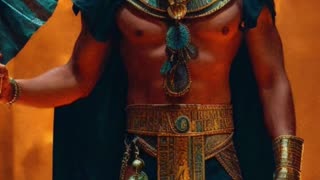 0:44
0:44
WildWildWorld24
2 months agoAkhenaten: The Radiant Revolution of Egypt's Enigmatic Emperor
190 -
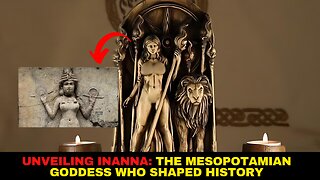 8:32
8:32
History
2 months agoDiscovering Inanna The Mesopotamian Goddess Who Shaped History
79 -
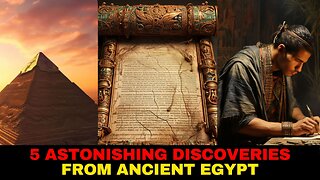 10:00
10:00
History
2 months agoUnearthing History 5 Astonishing Discoveries from Ancient Egypt
1913 -
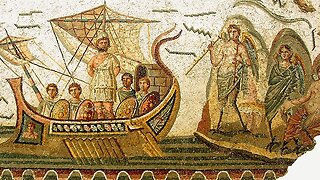 58:52
58:52
The Underground Man
3 months agoGreek Mythology Explained - Timeline of Mythology & Religion In Ancient Greece - Myth & Philosophy
80 -
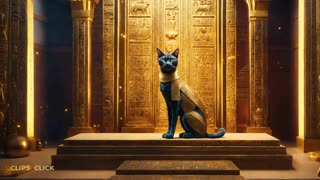 3:07
3:07
Clips2Click
3 months ago10 Shocking Secrets of Ancient Egypt You Didn't Learn in History Class
86 -
 47:20
47:20
Guided by the Ancients
2 months ago🔮 Meditate on Ancient Wisdom: The Sebayt of Ptah-Hotep (C. 2375–2350 BCE) 📜 | Guiding Maxims
361 -
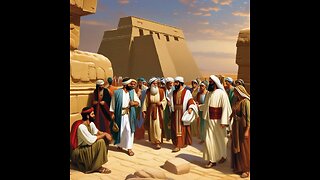 1:39
1:39
Adams Prayer
3 months agoAbram in Egypt - Genesis, The Old Testament.
27 -
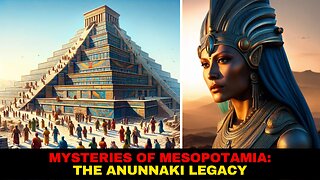 10:21
10:21
History
3 months agoUnveiling the Discoveries of Mesopotamia The Anunnaki Legacy
166 -
 3:29:53
3:29:53
MRCERBERUS
3 months agoGods, Heroes, and Monsters: Exploring the Epic Saga of Greek Mythology
58